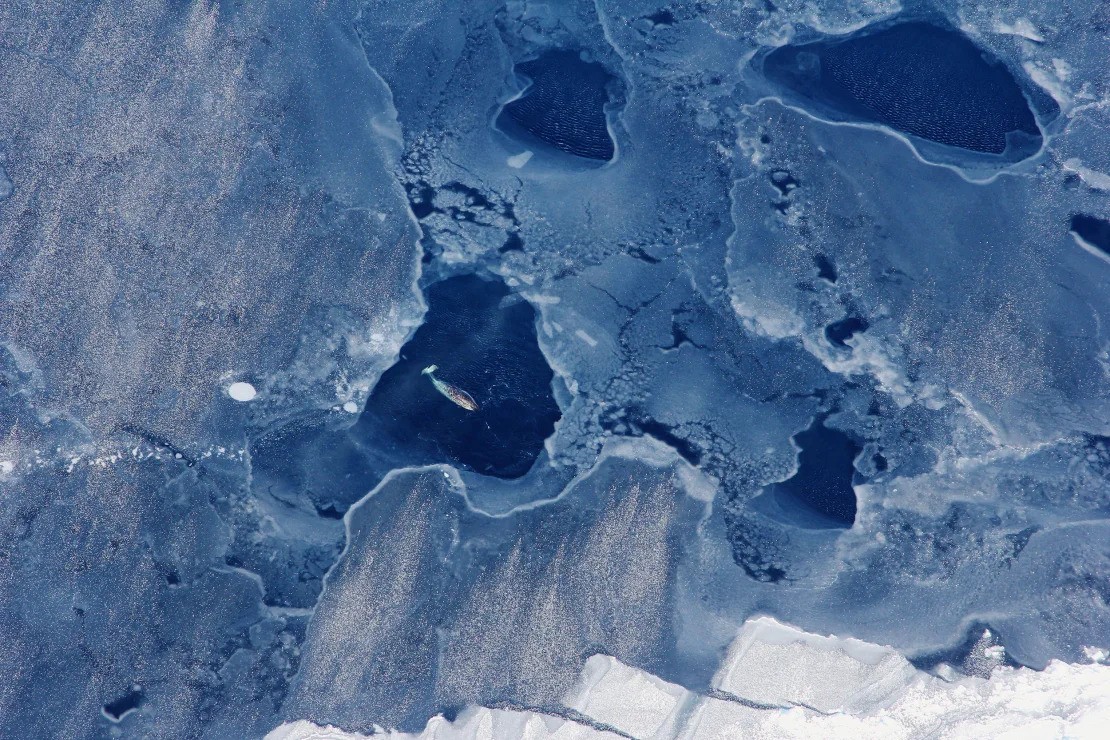Human Activity Pushing Migratory Animals Towards Extinction
Human activity pushing migratory animals towards extinction. Female leatherback turtles are renowned for their extraordinary journeys, spanning up to 10,000 miles in search of food after nesting.
Author:Karan EmeryReviewer:Daniel JamesFeb 12, 202418.3K Shares261.7K Views

Human activity pushing migratory animals towards extinction. Female leatherback turtles are renowned for their extraordinary journeys, spanning up to 10,000 miles in search of food after nesting. From tropical Southeast Asia to the chilly waters of Alaska, they brave various perils such as fishing nets, poachers, pollution, and the warming effects of climate change, which force them to travel even farther to locate their prey.
These turtles represent just one of the many migratory species facing extinction due to human interference, as highlighted in a groundbreaking report by a UN agencypublished on Monday. Out of the 1,189 species listed by the Convention on the Conservation of Migratory Species of Wild Animals (CMS), over 20% are threatened.
Among the endangered species are whales, sharks, elephants, wild cats, raptors, birds, and insects, encompassing a diverse range of animal groups. According to the report, 44% of these listedspecies are experiencing population declines. Of particular concern are migratory fish, with a staggering 97% of listed species facing extinction threats.
The report represents the first attempt to evaluate the situation of migratory species and their survival strategies in a world that has undergone significant human influence. It identifies overexploitation and habitat loss as the primary threats, driven by activities such as agricultural land clearing, road construction, and infrastructure development, which also serve to fragment migratory routes, hindering the completion of their journeys.
Approximately 58% of the monitored sites deemed crucial for migratory species are experiencing unsustainable levels of human pressure, per the CMS. Climate change and pollution further compound the challenges. Rising temperatures compel certain species to extend their travels and alter their migration timings, potentially disrupting crucial aspects like prey availability and breeding opportunities.
The Narwhal presents a poignant case study. These enigmatic creatures, renowned for their iconic spiral tusks, typically inhabit ice-free coastal zones during the summer before migrating southward to deeper Arctic waters. Yet, with warming oceans and delayed annual sea ice formation, some narwhals now postpone their migration, risking entrapment in ice with no openings for breathing should it freeze rapidly in autumn.
Global warming can also destroy habitats, such as coral reefs for marine life. Light pollution poses an increased danger to certain species during migration, particularly birds. The report highlights an alarming case at the McCormick Place Lakeside Center in Chicago, where over 40,000 dead birds have been recovered since 1978, having collided with the building due to being attracted to the light emanating from its windows.
Mass whale strandings have been attributed to sound pollution, while plastic pollution has been linked to the mortality of albatrosses and large migratory seabirds. The report underscores the critical role that creatures undertaking these often remarkable journeys play in maintaining the delicate ecological balance of the Earth.
"These animals are, first and foremost, part of the ecosystems where they're found," CMS executive secretary Amy Fraenkel told reporters. "And we have a lot of evidence showing that if you remove these species if they decline, it will have impacts on the ecosystems where they're found, and not in a positive way."
Consider bats, for instance. It may be challenging to perceive them as contributors to the world's beauty. However, migratory bats play a vital role as pollinators for numerous fruits and flowers, according to the report, pollinating over 500 flowering plant species. These bats aid in seed dispersal, are crucial for maintaining healthy forests, and help control insect populations by consuming substantial quantities of them.
Yet, bats face threats from deforestation, which diminishes their habitat, and hunting, as their meat is prized as a delicacy in certain regions. Additionally, noise pollution disrupts bats' foraging activities, reducing their hunting efficiency.
Despite some positive developments, such as increases in populations of species like blue and humpback whales, the overall findings of the report paint a concerning picture.
“„Today's report clearly shows us that unsustainable human activities are jeopardizing the future of migratory species - creatures who not only act as indicators of environmental change but play an integral role in maintaining the function and resilience of our planet’s complex ecosystems.- Inger Andersen, executive director of the United Nations Environment Programme
The report made its debut on Monday during a significant UN wildlife conservation conference held in Samarkand, Uzbekistan. Experts emphasize that mitigating the risks to migratory species will necessitate global collaboration, given that many of these animals traverse international borders during their regular journeys, whether over land, through oceans, or across the skies.
"Migratory species have a special role in nature as they don't recognize political boundaries," said Anurag Agrawal, professor of environmental studies at Cornell University. "Instead, they sew together large areas of the planet through their movements. Their conservation thus requires international cooperation."

Karan Emery
Author
Karan Emery, an accomplished researcher and leader in health sciences, biotechnology, and pharmaceuticals, brings over two decades of experience to the table. Holding a Ph.D. in Pharmaceutical Sciences from Stanford University, Karan's credentials underscore her authority in the field.
With a track record of groundbreaking research and numerous peer-reviewed publications in prestigious journals, Karan's expertise is widely recognized in the scientific community.
Her writing style is characterized by its clarity and meticulous attention to detail, making complex scientific concepts accessible to a broad audience. Apart from her professional endeavors, Karan enjoys cooking, learning about different cultures and languages, watching documentaries, and visiting historical landmarks.
Committed to advancing knowledge and improving health outcomes, Karan Emery continues to make significant contributions to the fields of health, biotechnology, and pharmaceuticals.

Daniel James
Reviewer
Daniel James is a distinguished gerontologist, author, and professional coach known for his expertise in health and aging.
With degrees from Georgia Tech and UCLA, including a diploma in gerontology from the University of Boston, Daniel brings over 15 years of experience to his work.
His credentials also include a Professional Coaching Certification, enhancing his credibility in personal development and well-being.
In his free time, Daniel is an avid runner and tennis player, passionate about fitness, wellness, and staying active.
His commitment to improving lives through health education and coaching reflects his passion and dedication in both professional and personal endeavors.
Latest Articles
Popular Articles
